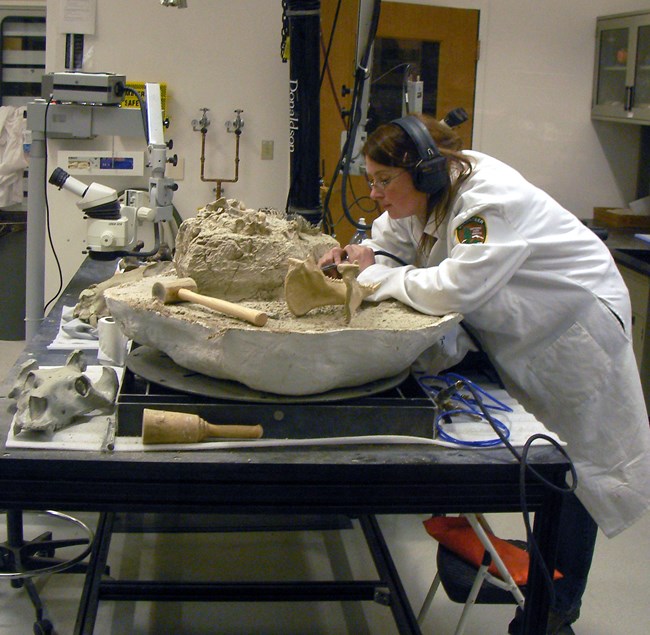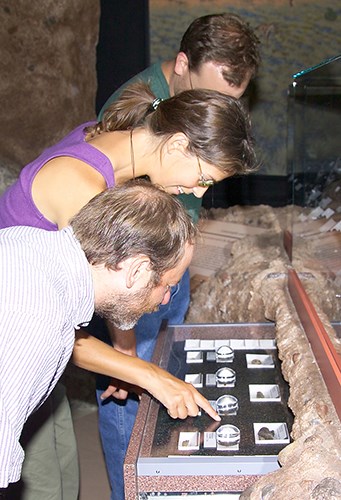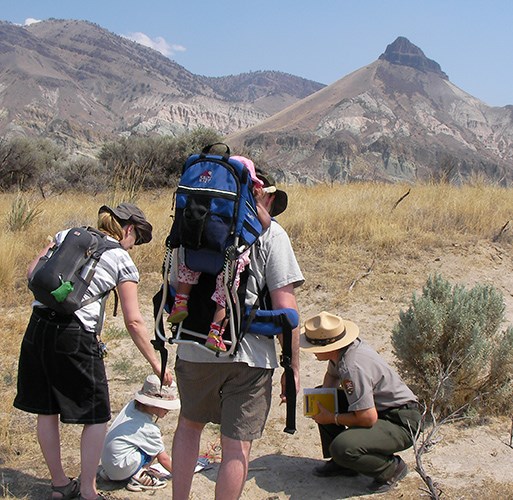|
The Foundation Document reflects the legislated established purpose of the monument, a description of the monument's resources and values that are significant enough to warrant national monument designation, the monument's fundamental resources and values that are essential to achieving the purpose of the monument and that are primary considerations during planning and management, other important resource values, and the monument's primary interpretive themes that are conveyed to visitors.

SignificanceSignificance statements express why John Day Fossil Beds National Monument resources and values are important enough to merit national park unit designation. Statements of significance describe why an area is important within a global, national, regional, and systemwide context. These statements are linked to the purpose of the park unit, and are supported by data, research, and consensus. Significance statements describe the distinctive nature of the park and inform management decisions, focusing efforts on preserving and protecting the most important resources and values of the park unit.
Fundamental Resources and ValuesFundamental resources and values are those features, systems, processes, experiences, stories, scenes, sounds, smells, or other attributes determined to merit primary consideration during planning and management processes because they are essential to achieving the purpose of the park and maintaining its significance.
John Day Fossil Beds National Monument contains other resources and values that may not be fundamental to the purpose and significance of the park, but are important to consider in management and planning decisions. These are referred to as other important resources and values.

Interpretive ThemesInterpretive themes are often described as the key stories or concepts that visitors should understand after visiting a park—they define the most important ideas or concepts communicated to visitors about a park unit. Themes are derived from—and should reflect—park purpose, significance, resources, and values. The set of interpretive themes is complete when it provides the structure necessary for park staff to develop opportunities for visitors to explore and relate to all of the park significances and fundamental resources and values.

DescriptionJohn Day Fossil Beds National Monument, in east central Oregon in Grant and Wheeler Counties, was established in 1975. It encompasses 14,000 acres in the John Day River valley. Eastern Oregon holds many unexpected elements: pine-forested mountains, glades that preserve tall native grasses and wildflowers, deep canyons, trout streams, and small coves of pinnacled badlands. Badlands are steep, barren (nonvegetated) lands that are dissected by many intermittent drainage channels. Intriguing, too, are the area’s hidden landscapes—the fossil remains of the jungles, savannas, and woodlands that once flourished here. The 20 square miles of John Day Fossil Beds National Monument feature sedimentary rocks that hold a plant and animal fossil record spanning nearly 50 million years of the “Age of Mammals and Flowering Plants,” from about 50 million to 5 million years ago. Due to the rain shadow effect of the Cascade and Ochoco Mountains to the west, the area has a semi-arid climate. Elevations range between 2,000 and 4,500 feet above sea level. Average annual precipitation is approximately 14 inches, with much of that coming in the spring as rainfall. The area receives little snowfall at the lower elevations. Numerous creeks in the area flow into the John Day River, which is a major tributary of the Columbia River and the longest undammed river that flows into the Columbia River today. The natural erosion processes associated with the area’s waterways have created features that have exposed the monument’s vast fossil record. The monument is geographically dispersed over three widely separated units: the Clarno Unit, the Painted Hills Unit, and the Sheep Rock Unit. All three units provide a variety of opportunities for recreation and study. The Clarno Unit is 18 miles southwest of the town of Fossil on Oregon Route 218. It contains 1,969 acres and includes trails and a picnic area. The most prominent natural feature is the towering Clarno Palisades, which are a series of sharp cliffs up to 150 feet high formed from a series of prehistoric volcanic mud flows. The Hancock Field Station, owned and operated by the Oregon Museum of Science and Industry, is on Bureau of Land Management conveyed public lands within the Clarno Unit. The Painted Hills Unit is 9 miles northwest of the town of Mitchell. It contains 3,129 acres and includes trails, a scenic overlook, a picnic area, and informational exhibits. The most prominent natural feature is a series of multicolored hills and ridges derived from exposed paleosols. The Sheep Rock Unit contains three parcels of land (totaling 8,916 acres) situated along Oregon Route 19 northwest of Dayville. This unit contains the Thomas Condon Paleontology Center, the 200-acre James Cant Ranch Historic District, trails, picnic areas, scenic overlooks, and informational exhibits. Prominent natural features include Picture Gorge, Sheep Rock, Goose Rock, Blue Basin, and Cathedral Rock. The unit is bisected by the John Day River. The monument contains a national natural landmark, designated in 1966 as the 39th national natural landmark nationwide. The John Day Fossil Beds national natural landmark significance statement states, “Sheep Rock is an icon of North American Tertiary vertebrate paleontology. Located within John Day Fossil Beds National Monument, the peak and surrounding badlands contains a remarkable sequence of very diverse fossils including early horses, rhinoceroses, canids, and over 30 other mammalian families entombed in reworked volcanic sediments.” Visitation to the monument has averaged about 119,000 visits per year, with a high of 196,277 in 2015 and a low of 74,800 in 1976. Visitation has been steadily increasing in recent years. Between 2012 and 2015, visitation increased by 33%. |
Last updated: January 16, 2018
